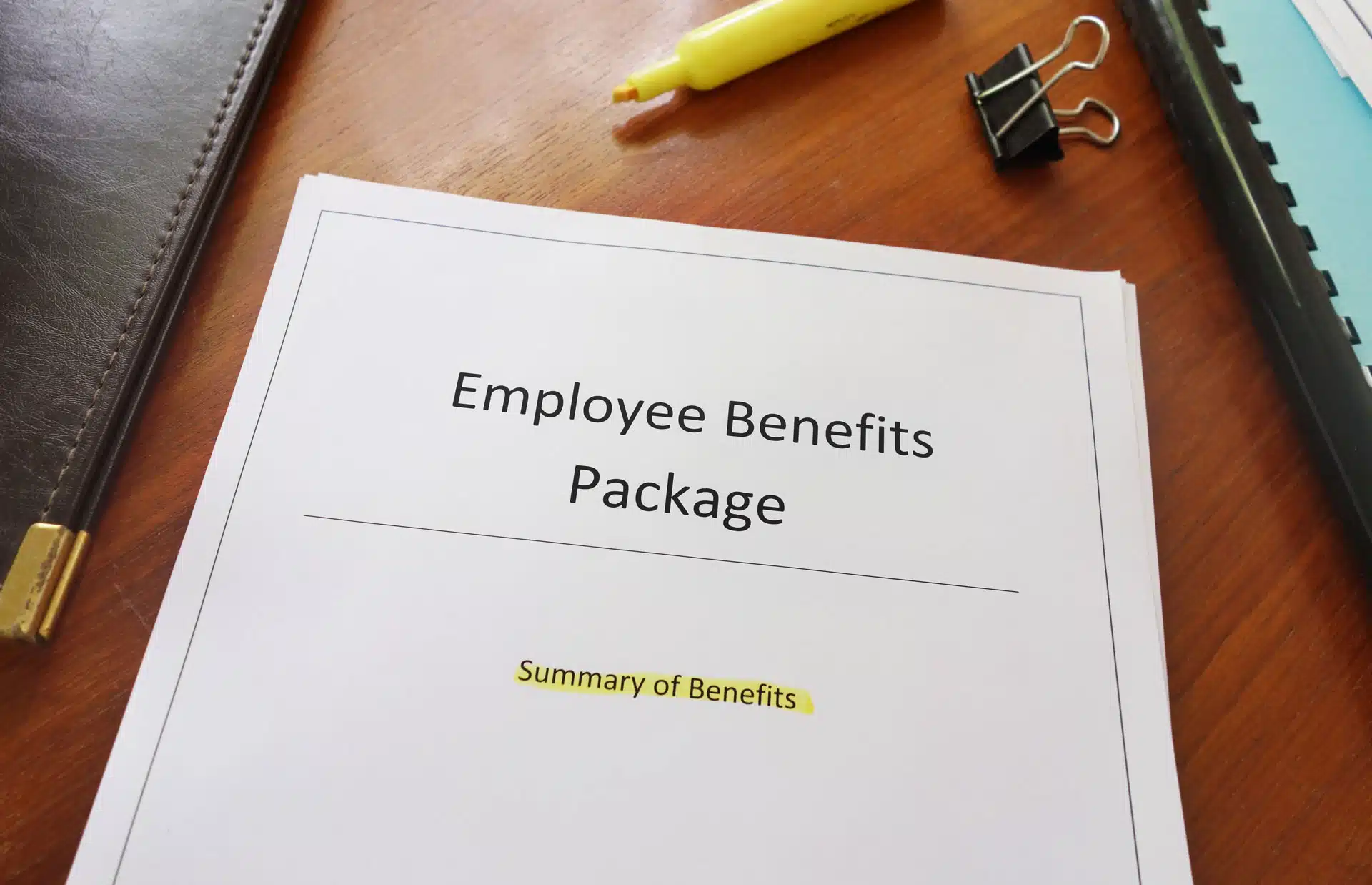
A significant part of many people’s compensation comes in the form of benefits on top of their salary.
Many of these benefits come with options that the employee must select, or the benefits work in conjunction with other financial products that are purchased outside of the workplace.
It is important to maximize these benefits and understanding all of the nuances can be daunting. No financial plan can be complete without seamlessly incorporating your employee benefits into your savings and insurance outside of work.
Most employee benefits fall into one of four areas: retirement plans, health insurance, life insurance, and disability insurance.
Retirement Plans
The employer-sponsored retirement plan is usually one of the most important and complex of the benefits. One of the biggest factors to consider when reviewing your plan is to make sure your risk tolerance and goals match your current investment selections and offer appropriate levels of diversification for your needs. These should be reviewed every couple of years since your risk tolerance will generally decrease as you get closer to retirement.
Your plan, whether it is a 401(k), 403(b), or 457, will come with annual contribution limits. For most people, contributing the maximum, if possible, will be ideal. In addition to the annual limits, there are certain exceptions or catch-up contributions, that can be taken advantage of.
Another major factor is making sure the tax treatment of the investments best matches your situation and goals.
The general rule here is utilizing Roth contributions until age 35 and then switching to making pre-tax contributions after age 35. The idea is while you’re young and not earning as much income as you will later in your career to pay tax on those dollars today (likely at lower tax rates) then as you make more money later in your career (in a higher tax bracket) you’ll want the deduction then you can pay the tax later.
Employers often offer an employer match to retirement plans as well. Your employer match is free money. Take advantage of this. Note, your employer contributions may be attached to a vesting schedule. Meaning, if you leave within a specified time then you could forfeit those contributions your employer made on your behalf.
Lastly, there are cases when it is allowed and advisable to take hardship loans or withdrawals from your plan in certain cases. If you are considering doing so, be aware of any tax penalty consequences and limitations on amounts and repayment schedules.
Medical Insurance
Your medical plan may also need to be reviewed. First, consider your age, health, cash flow, and emergency fund when making selections between a high and low deductible or high and low copay plans.
Adding your spouse and dependents may be a consideration as well. Not only is cost a factor, but you may want to consider what providers are covered under your plan. If your dependents have a doctor that they especially like, for example, you may want to keep them on the other spouse’s plan even if yours is less expensive.
It’s also important to consider the advantages of a Health Savings Account (HSA). An HSA is the only area in the tax code that offers a triple tax benefit. If you’re using an HSA-eligible high-deductible health plan, an HSA may allow you to reimburse yourself for medical expenses (tax-free) for you, your spouse, or dependents.
Life Insurance
Life insurance is another benefit you may have offered through your employer. The biggest factor to consider with your employer-sponsored life insurance is portability. You do not own the policy, and if you ever leave your job, or your employer changes their benefits package, you could lose your insurance.
If your health has changed during that time, it may be expensive or even impossible to get a new plan outside of your employer. Even if your health does not change, you will certainly be older, which will add to costs.
While group plans can be convenient because they generally do not require underwriting, they often do not carry an adequate amount of coverage for most people. Generally, it is advisable to not put yourself in a position where you have to rely solely on your group plan for your life insurance needs.
Disability Insurance
Similar to life insurance, your disability insurance from your employer-sponsored plan will not be portable since you do not own it. The other huge factor when evaluating disability insurance is the plan’s definition of disability.
Disability insurance definition of disability is either true own-occupation, modified-own occupation, or any occupation. Many group plans are any-occupation, meaning if you become disabled and cannot do your current job, but you are healthy enough to do any other job, the policy may not pay out.
Also, consider the taxability of your benefit. Generally, your employer will be taking a tax deduction on the premiums, thus the benefit would be taxable when it pays out.
The elimination period is another consideration. Think of the elimination period as like a deductible on a car insurance policy. The elimination period is how long after your disability until your policy starts to pay you a benefit. For long-term disability policies, the elimination period is generally 90 or 180 days. If your group plan has a 180-day elimination period, make sure you have six months of emergency savings saved up to bring the gap between your disability and when your policy pays out.
Understanding all of the nuances of these plans is complex, especially when you are trying to maximize and optimize your financial plan.
Often having a professional review your employee benefits when doing your planning is helpful. One of the many services we offer to our clients is a review of all savings plans and insurance policies. If you think a similar review would be helpful for you, do not hesitate to give us a call and set up a time to discuss.



